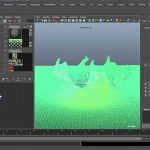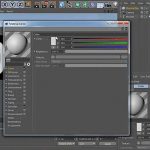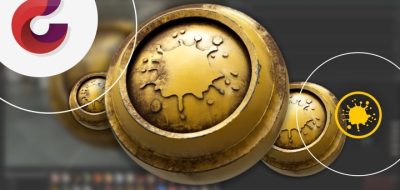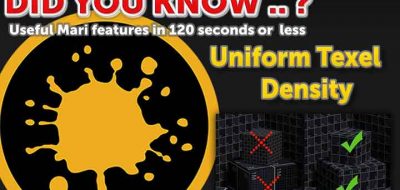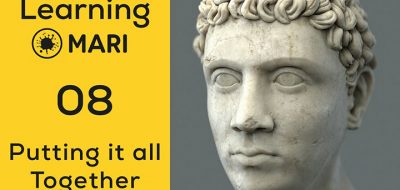The MaxDepth blog’s Timothy Hanson posts a look at getting started using The Foundry’s Mari. MaxDepth introduces Mari’s layer and channel system and covers layer stacking.
In this installment of “The Freelancer’s Guide” by MAXDEPTH we will break down the amazingly powerful texture painting program Mari by The Foundry
This is the second in a series of “Freelancer’s Guides”. The first one shows how to get up and running with everything you need to start using Solid Angle’s Arnold Renderer, with the post Get Up To Speed and Rendering On Day 1 Using The Arnold Renderer.
Getting Started with Mari
This hour long tutorial represents a great primer for jumping in and using Mari. After running through the important bits of the interface, Timothy takes a look at shaders and realtime previews for model textures.
There is also a look at Mari’s Palette toolset including
- The Image Manager for projecting textures
- The Projection Palette where you can set bake behavior, and choose from a number of powerful masking options. Specifically for this tutorial we will focus mainly on the Edge Mask, the Depth Mask, and Fractal Noise Masking options.
- The Painting Palette for setting up and understanding your Paint Buffer, and how it is essential for maximizing the resolution of your textures.
- The Light Palette where you can manipulate, and art direct the lighting within Mari to preview the way your model will look in your 3D software package of choice inside of Mari.
- Techniques like Layer Sharing between Channels, Adjustment Layers, Procedural Layers, and Masking techniques. For example Layer Sharing your Diffuse Color Channel with your Spec Channel allowing your Spec to be driven by your Diffuse Color. How to set up and use Adjustment Layers in our Layer Stack affording us the same functionality you would expect from Photoshop. How to use the powerful per layer Masking options allowing you the flexibility to make nondestructive changes to individual Layers in your Layer Stack, as well as introducing techniques for using Procedural Layers like Tiled and Tri-Planar Projection to lay down large amounts of paint quickly and easily.
- Closing out the tutorial we will show you how to export your textures, and give additional tips and tricks for integrating Mari into your pipeline.
Check out the The Freelancer’s Guide to Mari post over at MaxDepth here.

